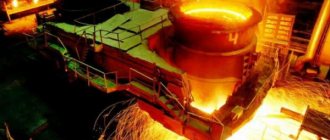General information:
| 100 | General information | |
| 101 | Name | Argon |
| 102 | Former name | |
| 103 | Latin name | Argon |
| 104 | English name | Argon |
| 105 | Symbol | Ar |
| 106 | Atomic number (number in table) | 18 |
| 107 | Type | Non-metal |
| 108 | Group | Inert (noble) gas |
| 109 | Open | William Ramsay, John William Strett (Lord Rayleigh), UK, 1894 |
| 110 | Opening year | 1894 |
| 111 | Appearance, etc. | An inert gas without color, taste or smell |
| 112 | Origin | Natural material |
| 113 | Modifications | |
| 114 | Allotropic modifications | |
| 115 | Temperature and other conditions for the transition of allotropic modifications into each other | |
| 116 | Bose-Einstein condensate | |
| 117 | 2D materials | |
| 118 | Content in the atmosphere and air (by mass) | 1,292 % |
| 119 | Content in the earth's crust (by mass) | 0,00015 % |
| 120 | Content in seas and oceans (by mass) | 0,000045 % |
| 121 | Content in the Universe and space (by mass) | 0,02 % |
| 122 | Abundance in the Sun (by mass) | 0,007 % |
| 123 | Content in meteorites (by mass) | |
| 124 | Content in the human body (by weight) |
Application area
The use of argon in welding has expanded significantly in recent years. Basically, it is used for complex and responsible work. If other, less expensive gases are suitable for standard joining procedures with ordinary metals, then only argon is needed for difficult-to-weld products. It can be used to weld aluminum, stainless steel of various grades, nickel and other non-ferrous metals.
In the construction industry, where it is necessary to obtain a connection of the highest possible quality, argon welding is the main one. The gas gained its popularity due to the minimal amount of defects that are produced during welding. Thin pipelines, chemical and food industries, mechanical engineering and other places where argon welding is used. In the private sphere, everything is used quite rarely, since the cost of the process turns out to be quite high and often unjustifiably. If there is a need to use argon in everyday life, then most often people turn to the services of specialists.
Properties of the argon atom:
| 200 | Properties of the atom | |
| 201 | Atomic mass ( molar mass ) | 39.948(1) amu (g/mol) |
| 202 | Electronic configuration | 1s2 2s2 2p6 3s2 3p6 |
| 203 | Electronic shell | K2 L8 M8 N0 O0 P0 Q0 R0 |
| 204 | Atomic radius (calculated) | 71 pm |
| 205 | Empirical atomic radius | |
| 206 | Covalent radius* | 106 pm |
| 207 | Ion radius | 154 pm |
| 208 | Van der Waals radius | 188 pm |
| 209 | Electrons, Protons, Neutrons | 18 electrons, 18 protons, 22 neutrons |
| 210 | Family (block) | p-family element |
| 211 | Period in the periodic table | 3 |
| 212 | Group on the periodic table | 18th group (according to the old classification - the main subgroup of the 8th group) |
| 213 | Emission spectrum |
Dependence of argon pressure in a cylinder on temperature
As it heats up, the pressure of the gaseous substance in a closed volume increases. The table shows approximate pressure values in the cylinder depending on the ambient temperature.
| T, °C | P, Megapascal |
| -40 | 10,45 |
| -30 | 11,33 |
| -20 | 12,21 |
| -10 | 12,92 |
| 0 | 13,74 |
| +10 | 14,62 |
| +20 | 15,33 |
| +30 | 16,03 |
It should be borne in mind that the balloon pressure does not change instantly, but as it warms up or cools down.
Chemical properties of argon:
| 300 | Chemical properties | |
| 301 | Oxidation states | 0 |
| 302 | Valence | 0 |
| 303 | Electronegativity | 4.3 (Pauling scale) |
| 304 | Ionization energy (first electron) | 1520.57 kJ/mol (15.7596117(5) eV) |
| 305 | Electrode potential | 0 |
| 306 | Electron affinity energy of an atom | -96(20) kJ/mol (-1.0(2) eV) – presumably |
Physical properties of argon:
| 401 | Density* | 0.001784 g/cm3 (at 0 °C and other standard conditions, the state of matter is gas), 1.3954 g/cm3 (at a boiling point of -185.848 °C and other standard conditions, the state of matter is liquid), 1.65 g/cm3 (at -233 °C and other standard conditions , state of matter - solid) |
| 402 | Melting temperature* | -189.34 °C (83.81 K, -308.81 °F) |
| 403 | Boiling temperature* | -185.848 °C (87.302 K, -302.526 °F) |
| 404 | Sublimation temperature | |
| 405 | Decomposition temperature | |
| 406 | Self-ignition temperature of a gas-air mixture | |
| 407 | Specific heat of fusion (enthalpy of fusion ΔHpl)* | 1.18 kJ/mol |
| 408 | Specific heat of evaporation (enthalpy of boiling ΔHboiling)* | 6.53 kJ/mol |
| 409 | Specific heat capacity at constant pressure | |
| 410 | Molar heat capacity* | 20.85 J/(K mol) |
| 411 | Molar volume | 22.392 cm³/mol |
| 412 | Thermal conductivity | 17.72 10-3 W/(m K) (at standard conditions), 0.0164 W/(m K) (at 300 K) |
| 413 | Thermal expansion coefficient | |
| 414 | Thermal diffusivity coefficient | |
| 415 | Critical temperature* | |
| 416 | Critical pressure* | |
| 417 | Critical Density | |
| 418 | Triple point | |
| 419 | Vapor pressure (mmHg) | |
| 420 | Vapor pressure (Pa) | |
| 421 | Standard enthalpy of formation ΔH | |
| 422 | Standard Gibbs energy of formation ΔG | |
| 423 | Standard entropy of matter S | |
| 424 | Standard molar heat capacity Cp | |
| 425 | Enthalpy of dissociation ΔHdiss | |
| 426 | The dielectric constant | |
| 427 | Magnetic type | |
| 428 | Curie point | |
| 429 | Volume magnetic susceptibility | |
| 430 | Specific magnetic susceptibility | |
| 431 | Molar magnetic susceptibility | |
| 432 | Electric type | |
| 433 | Electrical conductivity in the solid phase | |
| 434 | Electrical resistivity | |
| 435 | Superconductivity at temperature | |
| 436 | Critical magnetic field of superconductivity destruction | |
| 437 | Prohibited area | |
| 438 | Charge carrier concentration | |
| 439 | Mohs hardness | |
| 440 | Brinell hardness | |
| 441 | Vickers hardness | |
| 442 | Sound speed | |
| 443 | Surface tension | |
| 444 | Dynamic viscosity of gases and liquids | |
| 445 | Explosive concentrations of gas-air mixture, % volume | |
| 446 | Explosive concentrations of a mixture of gas and oxygen, % volume | |
| 446 | Ultimate tensile strength | |
| 447 | Yield strength | |
| 448 | Elongation limit | |
| 449 | Young's modulus | |
| 450 | Shear modulus | |
| 451 | Bulk modulus of elasticity | |
| 452 | Poisson's ratio | |
| 453 | Refractive index |
Story
The history of the discovery of argon begins in 1785, when the English physicist and chemist Henry Cavendish, studying the composition of air, decided to determine whether all the nitrogen in the air was oxidized. For many weeks, he exposed a mixture of air and oxygen in U-shaped tubes to an electric discharge, as a result of which new portions of brown nitrogen oxides were formed, which the researcher periodically dissolved in alkali. After some time, the formation of oxides stopped, but after binding the remaining oxygen, a gas bubble remained, the volume of which did not decrease with prolonged exposure to electrical discharges in the presence of oxygen. Cavendish estimated the volume of the remaining gas bubble to be 1/120 of the original volume of air. Cavendish could not solve the mystery of the bubble, so he stopped his research and did not even publish its results. Only many years later, the English physicist James Maxwell collected and published Cavendish's unpublished manuscripts and laboratory notes.
The further history of the discovery of argon is associated with the name of Rayleigh, who devoted several years to studying the density of gases, especially nitrogen. It turned out that a liter of nitrogen obtained from the air weighed 1.6 mg more than a liter of “chemical” nitrogen (obtained by decomposing some nitrogenous compound, for example, nitrous oxide, nitrous oxide, ammonia, urea or saltpeter) (the weight of the first was is equal to 1.2521, and the second is 1.2505 g). This difference was not so small that it could be attributed to experimental error. In addition, it was constantly repeated regardless of the source of chemical nitrogen.
Having not come to a solution, in the fall of 1892, Rayleigh published a letter to scientists in the journal Nature, asking for an explanation for the fact that depending on the method of nitrogen release, he received different density values. The letter was read by many scientists, but no one was able to answer the question posed in it.
The already famous English chemist William Ramsay also did not have a ready answer, but he offered Rayleigh his cooperation. Intuition prompted Ramsay to suggest that the nitrogen in the air contains admixtures of an unknown and heavier gas, and Dewar drew Rayleigh’s attention to the description of Cavendish’s ancient experiments (which had already been published by this time).
Trying to isolate a hidden component from thin air, each of the scientists went their own way. Rayleigh repeated Cavendish's experiment on an enlarged scale and at a higher technical level. A transformer energized at 6,000 volts sent a sheaf of electrical sparks into a 50-liter bell filled with nitrogen. A special turbine created a fountain of spray of alkali solution in the bell, absorbing nitrogen oxides and carbon dioxide impurities. Rayleigh dried the remaining gas and passed it through a porcelain tube with heated copper filings, which retained the remaining oxygen. The experiment lasted several days.
Ramsay took advantage of his discovery of the ability of heated magnesium metal to absorb nitrogen, forming solid magnesium nitride. He repeatedly passed several liters of nitrogen through the device he had assembled. After 10 days, the volume of gas stopped decreasing, therefore, all the nitrogen was bound. At the same time, by combining with copper, oxygen, which was present as an impurity in nitrogen, was removed. By this method, Ramsay managed to isolate about 100 cm³ of new gas in his first experiment.
So, a new element was discovered. It became known that it is almost one and a half times heavier than nitrogen and makes up 1/80 of the volume of air. Ramsay, using acoustic measurements, found that the molecule of the new gas consists of one atom - such gases had never been encountered in a stable state before. A very important conclusion followed from this: since the molecule is monatomic, then, obviously, the new gas is not a complex chemical compound, but a simple substance.
Ramsay and Rayleigh spent a lot of time studying its reactivity towards many chemically active substances. But, as one might expect, they came to the conclusion: their gas is completely inactive. It was stunning - until then, no such inert substance had been known.
Spectral analysis played a major role in the study of the new gas. The spectrum of the gas released from the air, with its characteristic orange, blue and green lines, was sharply different from the spectra of already known gases. William Crookes, one of the most prominent spectroscopists of that time, counted almost 200 lines in its spectrum. The level of development of spectral analysis at that time did not make it possible to determine whether the observed spectrum belonged to one or more elements. A few years later, it turned out that Ramsay and Rayleigh were holding in their hands not just one stranger, but several - a whole galaxy of inert gases.
On August 7, 1894 in Oxford, at a meeting of the British Association of Physicists, Chemists and Naturalists, a report was made on the discovery of a new element, which was named argon
. In his report, Rayleigh stated that in every cubic meter of air there is about 15 g of open gas (1.288 wt.%). The fact that several generations of scientists did not notice the component of air, and even in the amount of a whole percent, was too incredible! In a matter of days, dozens of natural scientists from different countries tested the experiments of Ramsay and Rayleigh. There was no doubt: the air contains argon.
Ten years later, in 1904, Rayleigh received the Nobel Prize in Physics for his studies of the densities of the most common gases and the discovery of argon, and Ramsay received the Nobel Prize in Chemistry for his discovery of various inert gases in the atmosphere.
origin of name
At the suggestion of Dr. Medan (chairman of the meeting at which the report on the discovery was made), Rayleigh and Ramsay gave the new gas the name “argon” (from the ancient Greek ἀργός - lazy, slow, inactive). This name emphasized the most important property of the element - its chemical inactivity.
Argon crystal lattice:
| 500 | Crystal cell | |
| 511 | Crystal grid #1 | |
| 512 | Lattice structure | Cubic face centered |
| 513 | Lattice parameters | 5.260 Å |
| 514 | c/a ratio | |
| 515 | Debye temperature | 85 K |
| 516 | Name of space symmetry group | Fm_3m |
| 517 | Symmetry space group number | 225 |








